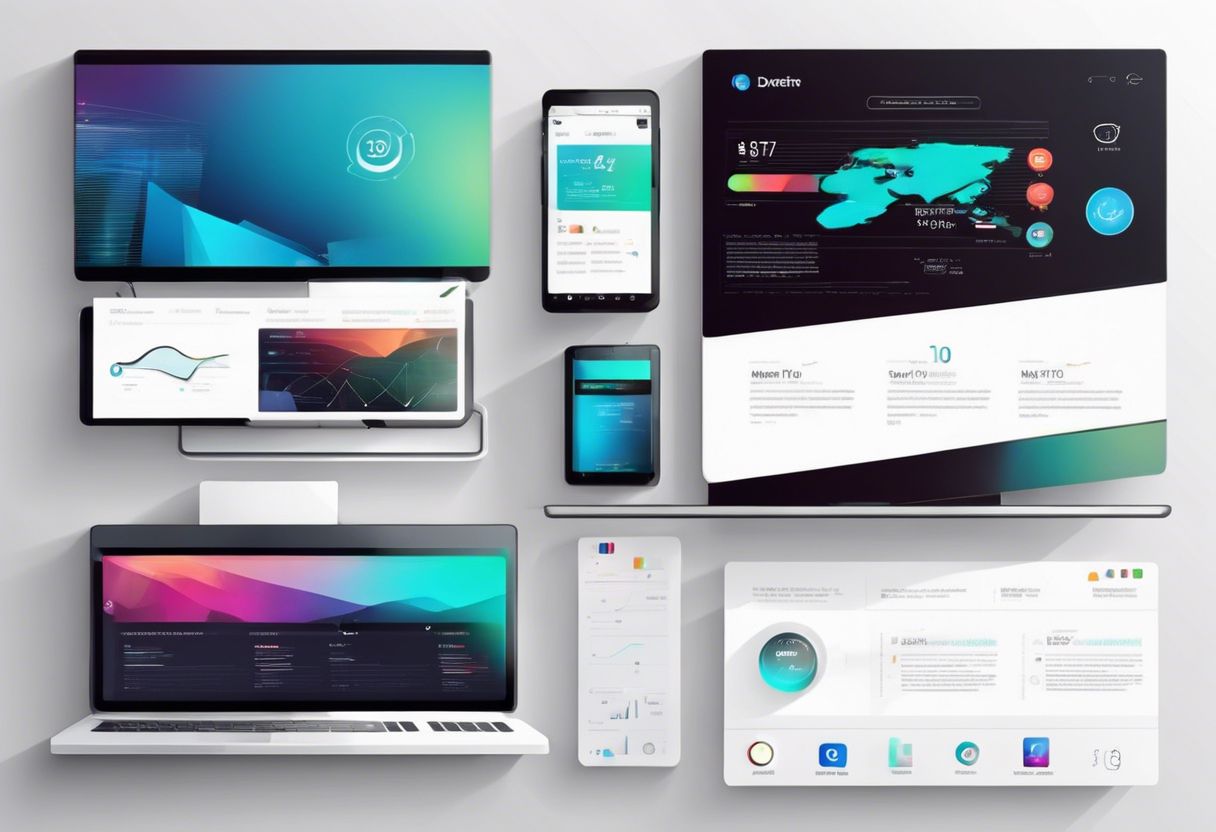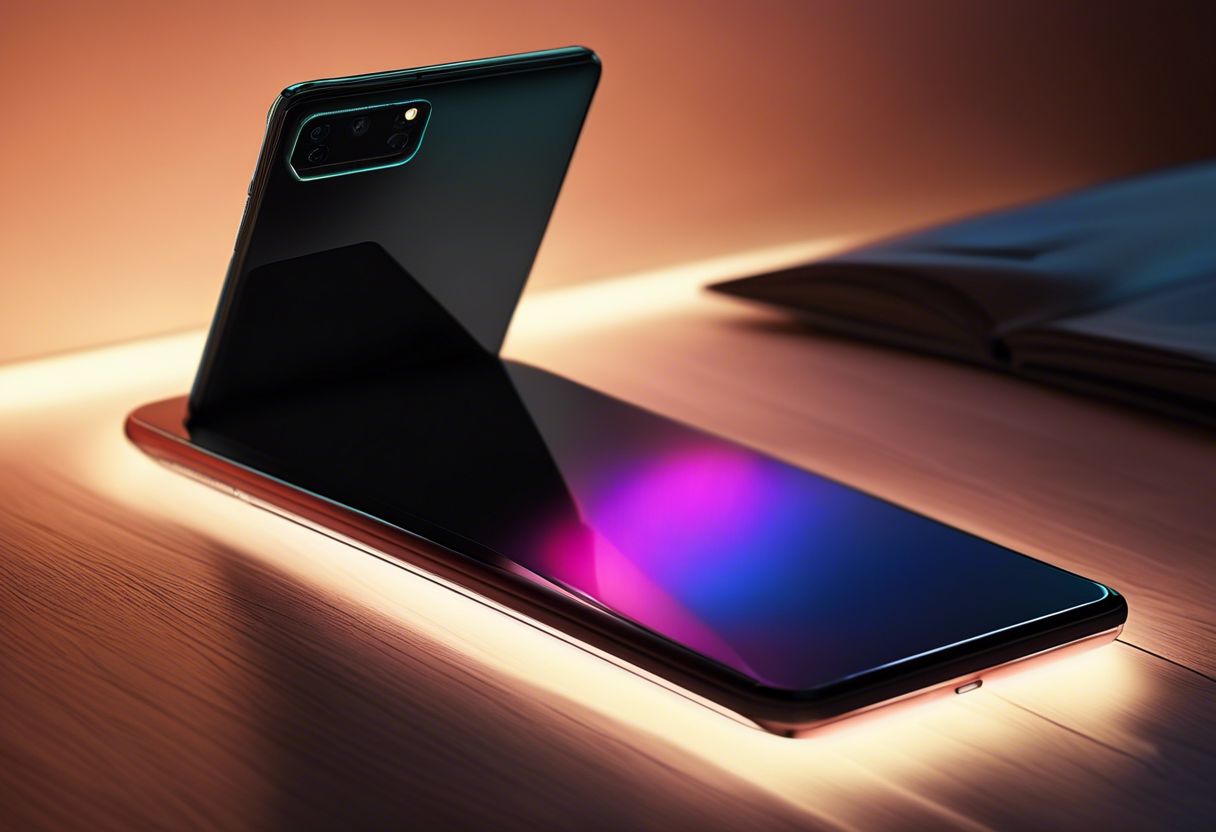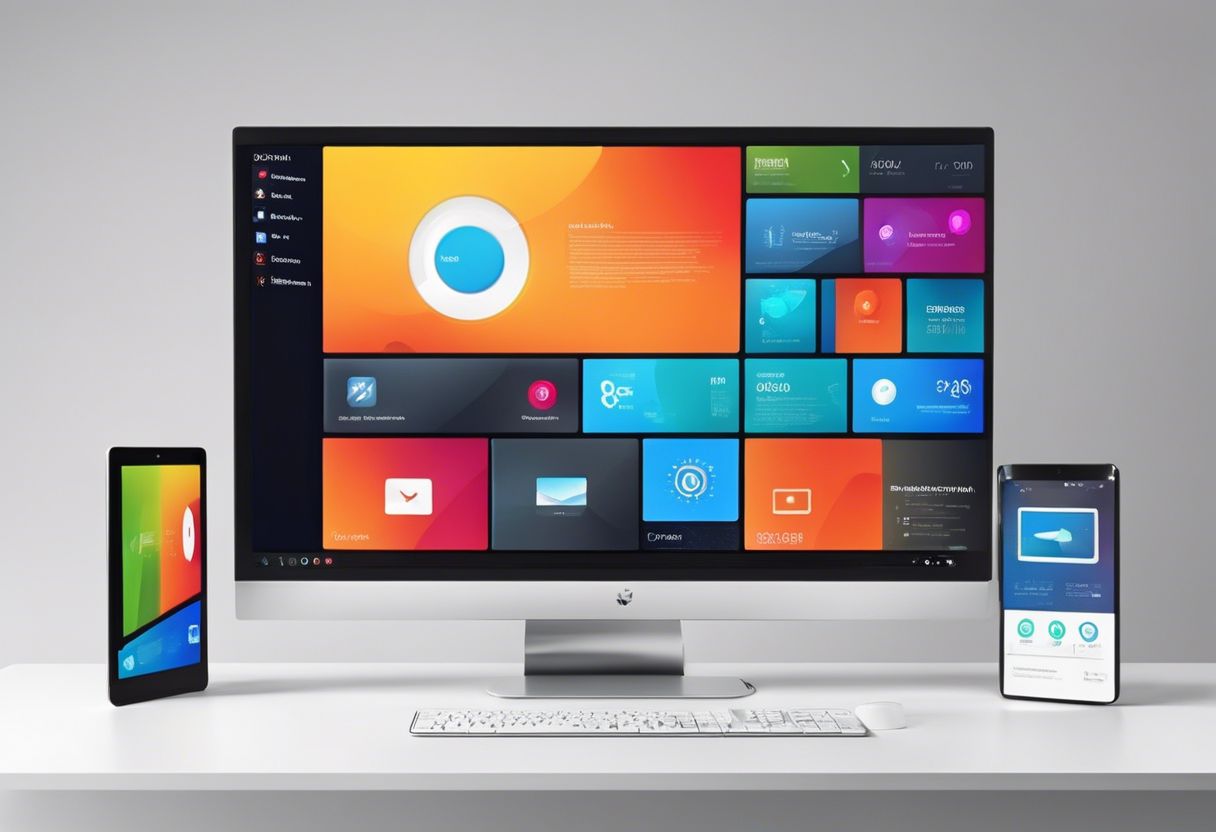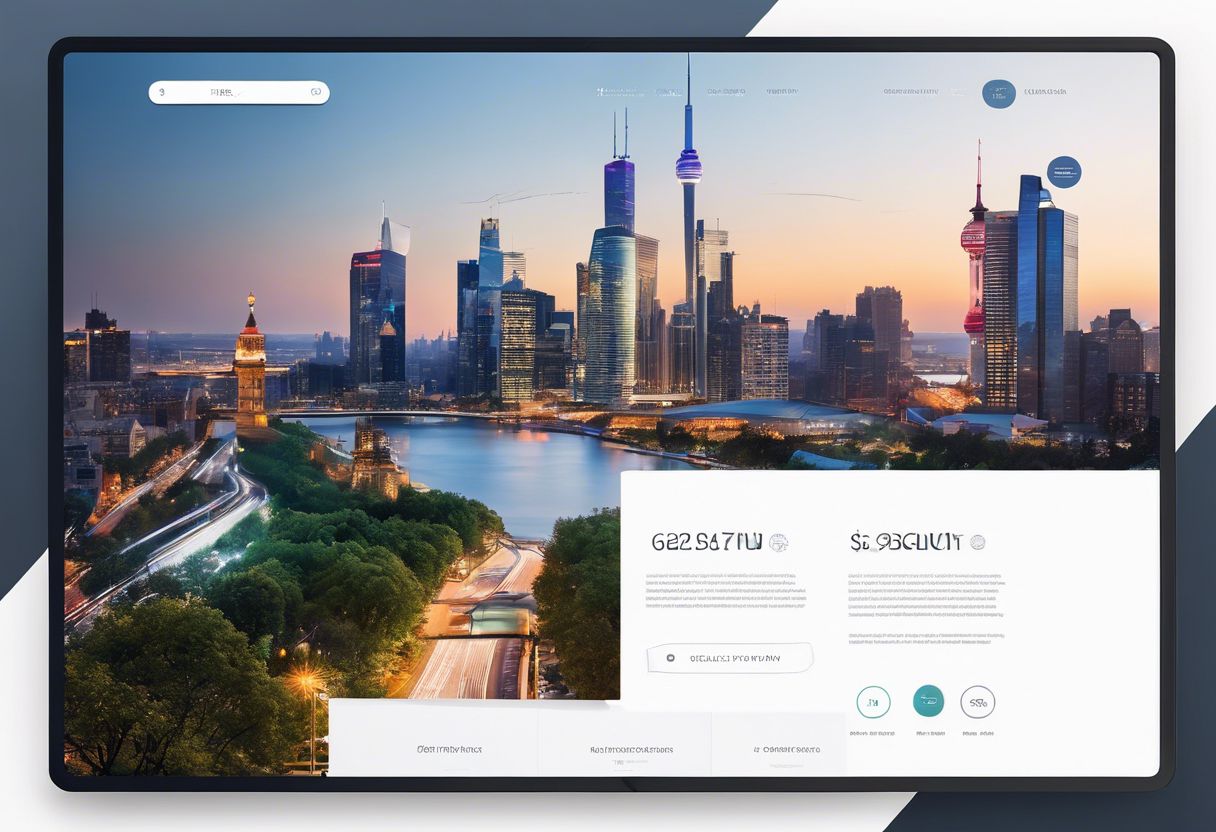Microinteractions Magic: Elevate User Experience In Seconds

Microinteractions are tiny, smart moves in our computer or phone screens that make using them fun and easy. Think of them as helpful hints that show us what’s happening when we do something on a device.
These quick tricks can get people to enjoy using an app more by making things clear without needing words.
They’re like a guide for users, pointing the way with little nudges and showing if something worked or didn’t. For example, when you pull down on your screen to refresh your emails, that’s a microinteraction at work! It turns out these small actions are super important because they make everyone feel good about using technology.
We’ll look at all the parts that go into making great microinteractions: triggers that start things off, rules that tell what should happen next, feedback so you know it’s working right, and loops and modes for those times when you need extra help.
Companies use neat little tricks too, like buttons with cool animations or smart forms on websites to help their pages load faster. And guess what? When businesses add these clever bits to their sites and apps, people stick around longer!
So here’s the plan: We’ll learn how simple it is to create these magic moments ourselves. By keeping things straightforward and always thinking about what users want most, we’ll see how testing new ideas makes everything better over time.
Are you ready? Let’s discover together how these nifty microinteractions can really give a boost to any business website! Keep reading as we jump into this adventure.
The Role of Microinteractions in UI/UX Design

Microinteractions play a crucial role in UI/UX design by enhancing user engagement and simplifying user tasks. These small moments within the digital interface can significantly impact the overall user experience and help reinforce brand identity.
Enhancing User Engagement

We know that keeping users happy and involved is key for our businesses. That’s where microinteractions shine! They are those small moments in using a website or app that make people feel great.
Think about the little animations that happen when you like a photo or the buzz of your phone when you set it to silent. These tiny details can turn an ordinary experience into something memorable.
These bits of magic help draw people in and keep them coming back. They show we care about their time with us, making everything they do feel more alive and fun. Whether it’s a clever confirmation message after sending an email or a playful nudge when they’ve reached an important milestone, these moments create joyful connections between our users and our services.
Let’s craft experiences that delight with every click, tap, or swipe! We’ll focus on what users need and love. With careful design and thoughtful touches, we stand out from the crowd.
This isn’t just about looking good—it’s about creating feelings of success and enjoyment every step of the way.
Simplifying User Tasks

Engaging users is just the beginning. Our focus shifts to making their tasks easier with microinteractions. These tiny touches guide users through their actions smoothly, like helpers that don’t get in the way.
They prevent mistakes by giving clear feedback right when it’s needed. This means less frustration and more getting things done.
Microinteractions act as signs on a road; they show you where to click, swipe, or enter information without having to stop and think about it. Every second counts for our users, and these design elements make sure none are wasted on figuring out what to do next.
We design each microinteraction carefully so that it feels natural to use your product. Visual cues from functional animations let our users know their action has worked or if something needs fixing.
It keeps everything flowing nicely without needing big changes in the interface – just small taps or swipes lead them forward effortlessly.
The Anatomy of Effective Microinteractions

Effective microinteractions are composed of triggers that initiate the interaction, rules that define what happens, feedback that informs users of the outcome, and loops and modes that determine the overall behavior.
Understanding this anatomy is crucial in creating seamless and intuitive user experiences.
Triggers

Triggers are what start microinteractions. Think of them as the spark that sets everything in motion. When we tap an app icon on our phone, that’s a user-initiated trigger – we’re telling the system to open the app.
But sometimes, triggers happen without us doing anything; these are system-initiated. For example, our phones light up with notifications even when they’re just sitting on the table.
These moments matter because they set off a chain reaction that makes our products feel alive and responsive. As business owners, we want every interaction to count, from the little nudge prompting customers to take action to signals letting them know something has changed.
After all, it’s about making things easy and intuitive for users – guiding them through their digital journey with cues they can instantly understand.
Now let’s talk about rules – another key part of microinteractions..
Rules

In designing microinteractions, rules play a crucial role in defining how the interaction behaves. These rules establish the specific conditions under which the microinteraction is triggered and determine what feedback or response it provides.
By setting clear and intuitive rules, we can ensure that users experience a consistent and predictable interaction with our product, leading to increased satisfaction and engagement.
Understanding user behavior is essential when formulating these rules as it allows us to anticipate their needs and provide seamless interactions that align with their expectations.
Effective microinteraction design should prioritize simplicity while adhering to established guidelines for user interface design. By creating rules that are easy for users to understand and follow, we can enhance their overall experience by minimizing confusion and frustration.
Feedback
 haptic feedback, with a cityscape visible through the window.” title=”A user interacts with a digital interface, feeling haptic feedback, with a cityscape visible through the window.” class=”awimage” />
haptic feedback, with a cityscape visible through the window.” title=”A user interacts with a digital interface, feeling haptic feedback, with a cityscape visible through the window.” class=”awimage” />
In designing effective microinteractions, we move from establishing rules to considering feedback. Feedback is a vital element as it provides a response to the trigger, acknowledging user actions and providing instant gratification.
It involves small visual cues that communicate changes in response to user input. Whether it’s through visual changes or tactile feedback, the goal of microinteraction feedback is to keep users engaged by rewarding their interactions with the interface.
One fundamental principle for creating effective microinteractions is to ensure that every user action triggers an immediate and appropriate response. By incorporating haptic feedback – delivering tactile sensations in response to user actions – designers can provide an even more engaging experience.
Loops and Modes

Loops and modes are like the behind-the-scenes directors of microinteractions. They determine how a microinteraction behaves over time and when it’s used repeatedly. The loop decides if the interaction repeats or changes, while modes dictate how the interaction evolves with each use.
Think of loops as setting the rhythm, determining whether a microinteraction follows a pattern or takes on new variations over time. Meanwhile, modes define different sequences or cycles that come into play as users engage with an interface.
In understanding loops and modes, we grasp how to create dynamic and engaging microinteractions that adapt to user behaviors seamlessly. By leveraging these meta-rules effectively, we can elevate user experiences by crafting fluid interactions that feel natural and intuitive for our audience.
Real-Life Examples of Microinteractions

From animated buttons and pull-to-refresh gestures to form validation and toggle switches, these real-life examples of microinteractions showcase the power they hold in enhancing user experience.
Keep reading to discover how these small moments can make a big impact on your digital interface.
Animated Buttons and Controls

Animated buttons and controls are like friendly guides for users as they navigate through a website or app. These tiny animations draw attention and guide users with visual feedback.
The motion of these elements helps to grab the user’s attention, making the interface more engaging and interactive. When designing animated buttons, it’s essential to consider color, shape, and timing to ensure that they effectively communicate with users.
Microinteractions are vital for enhancing the overall user experience in various design contexts such as websites and mobile apps. They serve as information managers, helping users move seamlessly through different functionalities.
Pull-to-Refresh Gestures

Animated buttons and controls can enhance the visual appeal of a digital interface, but pull-to-refresh gestures offer practical benefitsto users. These simple swipe or pull interactions provide instant feedback and communicate system status, making the user experience seamless.
For instance, fitness trackers leverage pull-to-refresh microinteractions to deliver valuable insights that motivate users to stay active. As business owners, embracing these subtle yet powerful interactions can significantly boost user engagement within your digital platform.
In the realm of UX/UI design, pull-to-refresh gestures exemplify how microinteractions adorn the user interface with engaging features. By understanding the impact of such interactions, you can effectively prioritize user goals and craft experiences that are both intuitive and captivating.
Form Validation

Form validation microinteractions are essential for providing real-time feedback to users when they enter invalid information. These interactions help in ensuring that the data entered into a form field meets the required criteria and standards.
When a user enters incorrect information, the feedback mechanism instantly alerts them about the error, allowing for quick correction. This not only enhances user experience but also minimizes the likelihood of erroneous submissions, thereby improving overall data accuracy.
Data validation is a common microinteraction associated with input restriction and error handling within forms. It helps in guiding users through the input process by providing clear and immediate notifications if any entered data fails to meet specified requirements.
Toggle Switches

Toggle switches are like the light switches at home – you can turn something on or off with them. They’re handy for giving users control over features in an app or on a website. For example, they’re used to activate or deactivate notifications, change settings, and more.
Toggle switches make it easy for users to interact with digital interfaces by providing a clear way to manage functionality.
As business owners, knowing how toggle switches work in microinteractions can help improve user experience and make your digital products more user-friendly and engaging. By understanding their role as real-life examples of microinteractions, you can create interfaces that give users the control they need.
Best Practices for Crafting Microinteractions

When crafting microinteractions, simplicity is key. Prioritize the user’s goals and needs to ensure that the interactions are intuitive and valuable. Testing and iterating on your designs is crucial for creating effective microinteractions that enhance the user experience.
Keep It Simple

When crafting microinteractions, simplicity is key. By keeping microinteractions simple, we ensure that users can easily understand and engage with them without confusion. This aligns with the best practice of building successful user experiences by avoiding unnecessary complexity.
Simplicity also helps in preventing unwanted interactions or distractions for a seamless user journey.
Prioritizing simplicity in microinteractions also resonates with the user’s goals and needs. It allows us to focus on delivering clear and intuitive interactions that enhance the overall digital experience.
By adhering to the principle of keeping it simple, we create an environment where users feel empowered and confident while interacting with our digital interfaces.
Prioritize User Goals
When crafting microinteractions, prioritizing user goals is paramount. Understanding what the users need and want allows us to design interactions that cater directly to their requirements, enhancing their experience.
By focusing on user goals, we ensure that our microinteractions address real problems and provide meaningful solutions in a way that truly resonates with the users.
Incorporating user goals in the design process enables us to create microinteractions that are not only seamless but also impactful. This approach ensures that every tiny interaction with a digital product aligns with what the users aim to achieve, making their journey smoother and more satisfying.
With a clear understanding of these goals, we can shape microinteractions that truly resonate with the intended audience.
Test and Iterate
To ensure that microinteractions are effective, we follow a process of testing and iterating. Through usability testing and gathering user feedback, we can gain insights into how users interact with the microinteractions.
Observing real users as they engage with these elements provides valuable information for refining and improving their usability. It is essential to revise microinteractions based on the findings from user testing in order to create an enhanced user experience that meets their needs.
Landing Page Brilliance: Incorporating Microinteractions for High Conversions

We can significantly boost our website’s conversion rates by strategically incorporating microinteractions on the landing page. These tiny user interactions, like animated buttons and pull-to-refresh gestures, create a more engaging experience that captivates visitors and encourages them to take action.
By providing immediate feedback and simplifying user tasks, microinteractions reduce uncertainty and make it easier for users to find what they’re looking for quickly.
Moreover, these small but impactful design elements infuse personality into user interactions, leaving a lasting impression that sets our website apart from the competition. As we prioritize user goals and test different iterations of microinteractions, we can fine-tune our landing page to deliver a fresh and delightful experience that ultimately leads to higher conversion rates.
Conclusion

Incorporating microinteractions can significantly elevate user experience in a digital interface. These small, functional animations not only provide visual feedback but also enhance user engagement.
By implementing best practices and real-life examples, businesses can create a seamless and intuitive user interface that prioritizes user goals. Ultimately, microinteractions are an essential aspect of UX design, contributing to the overall usability and appeal of a digital product while effortlessly enhancing the user experience.
Discover the secrets to supercharging your landing page conversions with our deep dive into Landing Page Brilliance: Best Practices for High Conversions.


